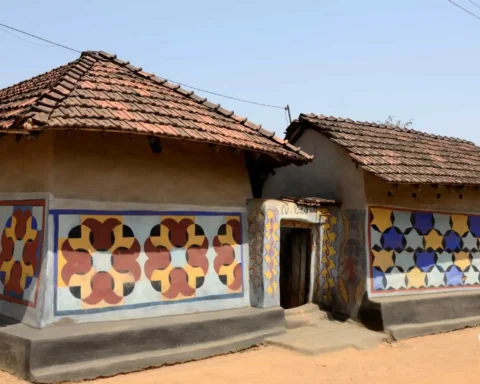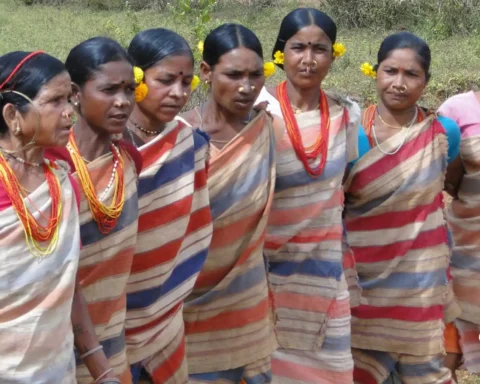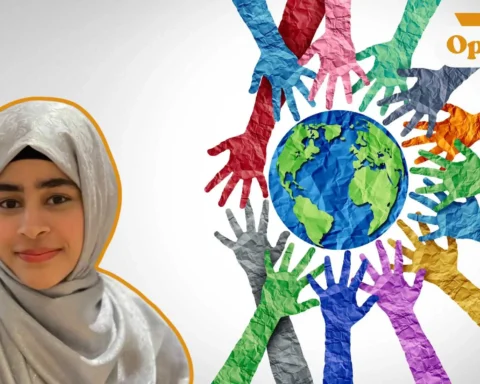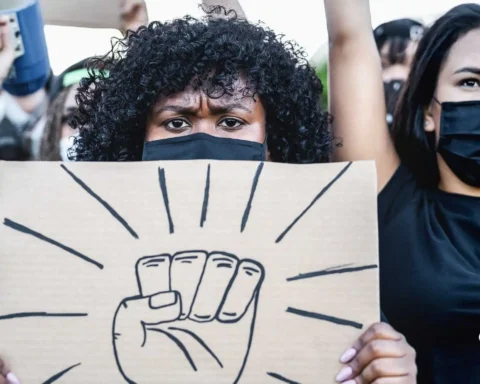In a world marked by rapid globalization and the ever-advancing tide of modernization, the rich tapestry of indigenous cultures has become a precious and endangered heritage. These diverse cultures, shaped over millennia, have thrived in harmony with the land and nature, offering invaluable insights into sustainable living, traditional knowledge, and a profound connection to their ancestral roots. This blog serves as a beacon, shedding light on the urgency and significance of the preservation of indigenous cultures and the crucial information they hold. Join us on a journey of discovery as we delve into the multifaceted world of indigenous peoples and the imperative to ensure that their traditions and wisdom endure for generations to come.
Table of Contents
Indigenous People and Why are they Called so?
Indigenous peoples, often referred to as "indigenous" or "aboriginal" peoples, are the original inhabitants of a specific geographic region or territory, typically predating the arrival of external settlers or colonial powers. The term "indigenous" emphasizes their status as the "first peoples" of a particular place, having occupied and cultivated these lands long before the arrival of other groups. Indigenous communities around the world are marked by their distinct cultures, languages, customs, and spiritual beliefs, which are intimately intertwined with their relationship to the environment. Calling them "indigenous" underscores their primordial connection to the land and their ancient presence, distinct from the later arrivals or settlers in a given region.
Types of Indigenous People
Indigenous peoples have significantly contributed to the world's cultural, environmental, and social diversity. Here are some important indigenous groups and their contributions:
Native America (North America): Native American cultures are diverse and rich, with each tribe having its own traditions, languages, and history. Since the 19th century, they have made substantial contributions to fields like agriculture, medicine, and environmental conservation. Additionally, by the 20th century, Native Americans' spiritual and cultural practices had influenced various aspects of the United States.
Maori (New Zealand): The Maori people are known for their vibrant culture and traditions, including the haka, a traditional dance. They have played a vital role in New Zealand's history in the 13th century and continue to advocate for their cultural preservation, land rights, and self-determination.
Aboriginal Indigenous Australians: The Aboriginal peoples of Australia have a history spanning tens of thousands of years. They deeply understand the Australian landscape, its ecosystems, and the use of native plants for medicinal and nutritional purposes. Their art, known for its intricate dot paintings and storytelling, is internationally renowned.
Inuit (Arctic regions): The Inuit people have thrived in one of the harshest environments on Earth. They are known for their unique skills in hunting, fishing, and survival in extreme cold. Inuit art, particularly soapstone carvings and sculptures, is celebrated worldwide.
Indigenous Peoples of the Amazon Rainforest: These indigenous groups are the guardians of the world's largest tropical rainforest. They possess invaluable medicinal plants, sustainable agriculture, and biodiversity conservation knowledge. Their way of life is deeply connected to the rainforest's well-being.
Sami (Northern Europe): The Sami people, inhabiting parts of Norway, Sweden, Finland, and Russia, have a rich cultural heritage. They are known for reindeer herding and have a deep spiritual connection to the Arctic landscape. The Sami are also advocates for indigenous rights and environmental protection.
Indigenous Peoples of Africa: Africa is home to numerous indigenous groups, such as the San (Bushmen) in Southern Africa, the Maasai in East Africa, and the Pygmies in Central Africa. These groups have diverse languages, traditions, and hunting and gathering practices, contributing to Africa's cultural diversity.
Taiwanese Indigenous Peoples: Taiwan is home to several indigenous groups, including the Amis, Atayal, and Paiwan. They have unique languages, art, and cultural practices. Taiwanese indigenous communities have been instrumental in preserving traditional ecological knowledge and advocating for their rights.
Indigenous Peoples of South America: South or Latin America is home to a vast array of indigenous cultures, including the native population of the Quechua and Aymara in the Andes, the Guarani in Brazil, and the Mapuche in Chile and Argentina. They have made significant contributions to agriculture, textiles, and traditional knowledge.
These are just a few examples of the many indigenous groups worldwide, each with its unique contributions to human heritage and a shared struggle for recognition, cultural preservation, and the protection of their ancestral lands. Acknowledging and respecting indigenous peoples' diverse cultures and knowledge systems is essential for promoting global cultural diversity and environmental sustainability.
YOU MIGHT BE INTERESTED IN: Echoes of the Past: Indo-Aryans' Impact on Indian Culture with Alex Beeching
Characteristics of Indigenous Population
Indigenous peoples and their cultures exhibit various unique and distinctive characteristics. While the specific features can vary widely among different indigenous groups around the world, there are several typical specialities that are often found:
Deep Connection to the Land: Indigenous cultures typically have a profound and spiritual relationship with their ancestral lands. They often view the land as a resource and a sacred entity that sustains their way of life. The deep connection to the land is a cornerstone of indigenous cultures, reflecting their respect for nature, their commitment to sustainability, and their recognition of the spiritual and cultural significance of the environments in which they live. It serves as a reminder of the importance of preserving these cultures and the lands they cherish to benefit future generations and the planet's well-being.
Traditional Ecological Knowledge: Indigenous peoples possess a wealth of knowledge about their local ecosystems, including plant and animal species, weather patterns, and sustainable agricultural practices. Their indigenous knowledge is often passed down orally from generation to generation.
Cultural Diversity: The world's indigenous communities are incredibly diverse, each with its own ethnic culture, language, customs, art forms, and spiritual beliefs. This diversity contributes to the richness of global culture.
Oral Traditions: Many indigenous cultures rely on oral storytelling to pass down their history, myths, and wisdom. These oral traditions often involve intricate narratives, songs, and dances.
Unique Art Forms: Indigenous art is often characterized by its distinct aesthetics, such as intricate carvings, paintings, textiles, pottery, and jewellery. These art forms often incorporate traditional symbols and motifs.
Community Focus: Indigenous societies often prioritize community well-being over individual success. Decision-making is frequently communal, with a strong sense of solidarity and mutual support.
Traditional Healing Practices: Indigenous cultures often have their own systems of traditional medicine, which may involve herbs, rituals, and spiritual healing. These practices are deeply tied to their cultural and spiritual beliefs.
Sustainable Practices: Indigenous peoples are known for their sustainable land and resource management practices, prioritising long-term environmental stewardship over short-term gain.
Ceremonies and Rituals: Indigenous cultures often have elaborate ceremonies and rituals for significant life events, such as births, coming-of-age ceremonies, marriages, and funerals. These rituals are an integral part of their identity and spirituality.
Resilience: Many indigenous communities have faced historical injustices, including colonization, displacement, and discrimination. Despite these challenges, they often exhibit remarkable resilience and determination in preserving their cultures and advocating for their rights.
Language Preservation: Indigenous languages are often endangered, but efforts are made to preserve and revitalize them. These languages hold unique insights into the culture and worldview of indigenous peoples.
Sustainable Agriculture: Indigenous farming techniques often prioritize sustainability and resilience against environmental challenges, offering valuable lessons for sustainable agriculture.
These specialities reflect the rich cultural diversity and the profound connection to the environment that characterizes many indigenous cultures. They are a testament to the importance of recognizing, respecting, and preserving the heritage of indigenous peoples for the benefit of humanity as a whole.
Need for Preserving Indigenous Culture
Preserving indigenous cultures is a matter of respecting indigenous peoples' unique contributions and identities and recognizing the value they bring to the global community. It is of paramount importance for several compelling reasons:
Cultural Diversity: Indigenous cultures represent a rich tapestry of human diversity. Each indigenous group has a unique language, traditions, knowledge systems, and worldviews. Preserving these cultures contributes to the overall cultural richness of humanity.
Cultural Heritage: Indigenous cultures have historical and spiritual significance. They are often the custodians of traditional knowledge, oral histories, and sacred practices that provide insights into the past and offer lessons for the future.
Environmental Stewardship: Indigenous peoples' deep connection to their ancestral lands often results in sustainable land and resource management practices. Preserving indigenous cultures can help protect critical ecosystems and promote sustainable approaches to environmental conservation.
Social Cohesion: Indigenous cultures foster strong senses of community and identity. Preserving these cultures can strengthen social cohesion and contribute to the well-being and resilience of indigenous communities.
Human Rights: Indigenous cultures are intimately tied to the human rights of indigenous peoples. Protecting these cultures is essential for upholding their rights to self-determination, cultural identity, and land ownership, as recognized by international agreements like the United Nations Declaration on the Rights of Indigenous Peoples (UNDRIP).
Interconnectedness: Indigenous cultures often emphasize the interconnectedness of all living beings and the environment. These perspectives can provide valuable insights and solutions to global challenges like climate change and environmental degradation.
Cultural Exchange: Preserving indigenous cultures encourages intercultural dialogue and exchange, fostering greater understanding and appreciation among communities and societies.
Innovation and Adaptation: Indigenous cultures are repositories of traditional knowledge and adaptive strategies for living in diverse environments. These insights can offer innovative solutions to contemporary challenges, such as sustainable agriculture and natural resource management.
Historical Justice: Many indigenous communities have faced historical injustices, including land dispossession and discrimination. Preserving their cultures is a means of acknowledging and rectifying past wrongs and working toward reconciliation.
Human Flourishing: Cultural identity and cultural practices are central to the well-being and self-esteem of individuals within indigenous communities. Preserving these cultural elements contributes to indigenous peoples' overall flourishing and mental health.
Preserving indigenous culture is essential for promoting cultural diversity, environmental sustainability, human rights, social well-being, and historical justice.
Organizations and Treaties That Help In the Preservation of Indigenous Cultures
Countries have signed several international treaties, agreements, and conventions to protect the rights and well-being of indigenous peoples. These agreements aim to address indigenous communities' historical and ongoing challenges and promote their self-determination, cultural preservation, and socioeconomic development. Some key treaties and agreements include:
United Nations Declaration on the Rights of Indigenous People (UNDRIP)
The United Nations (UN) is a national organization that has played a significant role in recognizing and addressing the rights and well-being of these national minorities worldwide. Here is a brief overview of how the international community helped indigenous peoples when it officially recognized their rights and some measures taken to protect those rights:
Recognition and Declaration: The landmark moment in recognising indigenous rights at the UN came with the adoption of the "United Nations Declaration on the Rights of Indigenous Peoples" (UNDRIP) on September 13, 2007. This declaration culminated decades of advocacy and negotiations among indigenous representatives, member states, and UN agencies.
Right to Self-Determination: UNDRIP affirms the right of indigenous peoples to self-determination, which includes the right to freely determine their political status and pursue their cultural, social, and economic development. This recognition is fundamental to indigenous sovereignty.
Protection of Indigenous Lands and Resources: UNDRIP emphasizes land claims and the rights of indigenous peoples to own, control, and manage their lands, territories, and resources. It calls for protection against forced land theft, displacement, and dispossession and respect for traditional land tenure systems.
Cultural and Spiritual Rights: The declaration acknowledges the importance of cultural identity, preserving and revitalizing indigenous cultures, languages, and spiritual traditions. It also highlights the right to participate in decision-making processes that affect the recognition of the rights of indigenous communities.
Free, Prior, and Informed Consent (FPIC): UNDRIP enshrines the principle of FPIC, which requires governments to obtain the informed consent of indigenous peoples before undertaking development projects or activities that may affect their lands or resources.
Indigenous Participation: The UN has established mechanisms for the active participation of indigenous representatives in various UN processes and forums. The UN Permanent Forum on Indigenous Issues and the Expert Mechanism on the Rights of Indigenous Peoples are two such mechanisms.
Promoting Indigenous Health and Education: The UN, through agencies like UNICEF and the World Health Organization (WHO), works to improve indigenous access to healthcare and education, addressing disparities in these areas.
Advocacy and Awareness: The UN raises awareness about the challenges faced by indigenous peoples through events like the International Day of the World's Indigenous Peoples (celebrated on August 9th) and by promoting the dissemination of information about indigenous issues.
Support for Indigenous Development: The UN Development Programme (UNDP) and other UN agencies provide support for these ethnic minority's development projects aimed at enhancing economic opportunities, sustainable livelihoods, and social well-being.
Monitoring and Reporting: UN agencies and mechanisms monitor the implementation of UNDRIP and assess the indigenous identity and collective rights situations of indigenous peoples in various countries. They publish reports and recommendations to address violations and improve conditions.
While UNDRIP and various UN efforts have contributed significantly to recognising and protecting indigenous rights, challenges remain. Implementing these rights varies from country to country, and indigenous communities continue to face issues such as land disputes, discrimination, and lack of access to essential services. Indigenous peoples and their advocates continue working with the UN and governments to fully realise their rights and well-being.
The International Work Group for Indigenous Affairs (IWGIA)
IWGIA - International Work Group for Indigenous Affairs is a prominent global nonprofit organization dedicated to promoting and defending the rights of indigenous peoples. Founded in 1968, IWGIA has played a pivotal role in advocating for the rights, well-being, and self-determination of indigenous communities around the world. It engages in research, advocacy, and capacity-building initiatives to address land rights, cultural preservation, environmental protection, and social justice for indigenous populations.
IWGIA collaborates with indigenous organizations, governments, and international institutions to raise awareness, provide support, and drive positive change in the lives of indigenous peoples. Through its extensive network and decades of experience, IWGIA continues to be a vital force in the global indigenous rights movement, working tirelessly to advance the recognition and protection of these marginalized communities.
The Waitangi Treaty
The Waitangi Treaty, also known as the Treaty of Waitangi, is a historic agreement signed on February 6, 1840, between the indigenous Māori people of New Zealand and representatives of the British Crown. It is one of the most significant documents in New Zealand's history and serves as the foundation of the country's modern legal and political framework.
The Treaty of Waitangi was named after Waitangi, a small town in the Bay of Islands on the North Island of New Zealand, where it was first signed. The treaty had two versions: the English version and the Māori version. These two versions have often been controversial and debated due to differences in interpretation and translation.
The fundamental principles of the Treaty of Waitangi can be summarized as follows:
Partnership: The treaty was seen by Māori chiefs as a partnership agreement with the British Crown. It recognized Māori ownership of their lands and resources while acknowledging the authority of the Crown.
Kawanatanga (Governorship): In the English version of the treaty, Māori chiefs ceded "kawanatanga" (governorship) to the Crown, allowing the British government to establish law and order in New Zealand. However, the Māori version used the term "tino rangatiratanga," which implied retaining full chieftainship over their lands and resources. This difference in wording has been the source of ongoing debate and disputes.
Protection: The treaty promised protection for most of Papua New Guinea's indigenous population with Māori customs, culture, and property rights. It assured Māori that they would continue to enjoy British subjects' full rights and privileges.
Over time, conflicts and tensions arose between Māori and the British Crown regarding the interpretation and implementation of the treaty. Land disputes, loss of Māori land, and breaches of the treaty's principles led to significant grievances among Māori communities. These issues have had a lasting impact on New Zealand's social and political landscape.
In the late 20th century, there was a renewed focus on addressing treaty grievances and promoting the principles of partnership and justice. The Waitangi Tribunal was established in 1975 to investigate and recommend settlements for breaches of the Treaty of Waitangi. Since then, numerous settlements have been reached between the New Zealand government and Māori iwi (tribes) and hapū (sub-tribes) to address historical grievances related to land confiscations and other treaty breaches.
The Waitangi Treaty continues to symbolise reconciliation, partnership, and the importance of honouring the rights and interests of indigenous peoples. It is commemorated annually on February 6th as Waitangi Day, a national holiday in New Zealand, during which citizens reflect on the country's history and its ongoing commitment to addressing treaty-related issues.
Indigenous and Northern Affairs Canada (INAC)
Indigenous and Northern Affairs Canada (INAC), earlier known as Aboriginal Affairs and Northern Development Canada (AANDC) and now known as Indigenous Services Canada (ISC), is a federal government department in Canada responsible for the well-being and rights of Indigenous peoples and northern residents.
ISC is crucial in implementing government policies and programs related to Indigenous issues, such as education, healthcare, housing, infrastructure, economic development, and land management. Its mandate includes fostering economic and social development, addressing historical injustices, and supporting self-governance and self-determination for Indigenous communities. The department collaborates with Indigenous organizations and communities to advance reconciliation efforts and ensure Indigenous voices and perspectives are integrated into policy decisions and initiatives. ISC plays a vital role in supporting Indigenous rights and improving the quality of life for Indigenous peoples across Canada.
Statistics
In Panama and Russia, the maternal mortality rate among Indigenous women is approximately six times higher than that of non-Indigenous women. Among the Indigenous demographic, youth aged 15 to 24 constituted a significant portion, making up 16.9% of the total Indigenous population, a higher proportion than in the non-Indigenous population at 12%. Shifting our focus to Canada, the 2021 Census revealed that 1,807,250 individuals identified as Indigenous, comprising 5.0% of the nation's population.
ALSO READ: The Significance of Art in Aboriginal Culture
Conclusion
Preserving indigenous culture is not merely a matter of heritage or history but a fundamental necessity for our global community. As my blog has highlighted, indigenous cultures offer a wealth of wisdom, from sustainable land management practices to profound spiritual insights. They serve as a testament to human diversity, environmental stewardship, and the interconnectedness of all living beings.
By providing information on the significance of indigenous cultures and the urgent need for their preservation, this blog aims to inspire awareness, understanding, and respect for these invaluable traditions. Through collective efforts and a commitment to upholding indigenous peoples' rights and identities, we can ensure the continued flourishing of these unique cultures for generations to come.
FAQs
What is the difference between Indigenous and local communities?
Indigenous communities are typically the original inhabitants of a specific region with distinct cultural identities, often predating colonization. While also residing in a particular area, local communities may have more diverse origins and may not share the same historical and cultural ties to the land.
What are the 5 elements of Indigenous culture?
Five key elements of Indigenous culture include a deep connection to ancestral lands, rich oral traditions and storytelling, unique languages, spiritual beliefs often tied to nature, and traditional art forms, all contributing to the richness and diversity of indigenous cultures worldwide.
Which country has the most indigenous people?
Australia has one of the largest indigenous populations in the world, with over 700,000 Aboriginal and Torres Strait Islander people representing a significant proportion of its total population.
How many indigenous people are there in India?
India is home to approximately 104 million indigenous people, comprising a diverse range of ethnic groups, languages, and cultures spread across various regions of the country.











[…] a wide array of customs, art forms, and rituals, showcasing the kaleidoscope of influences from indigenous peoples, European colonizers, Malay slaves, Indian labourers, and […]
[…] culture and identity are strongly influenced by our food, which reflects our geographic origins through the […]
[…] part of a hybridity. It is a debatable issue how much hybridity retains both languages equally. Indigenous languages stand at the threat of becoming oblivion as there are a few speakers who continue to […]